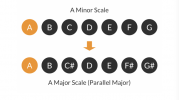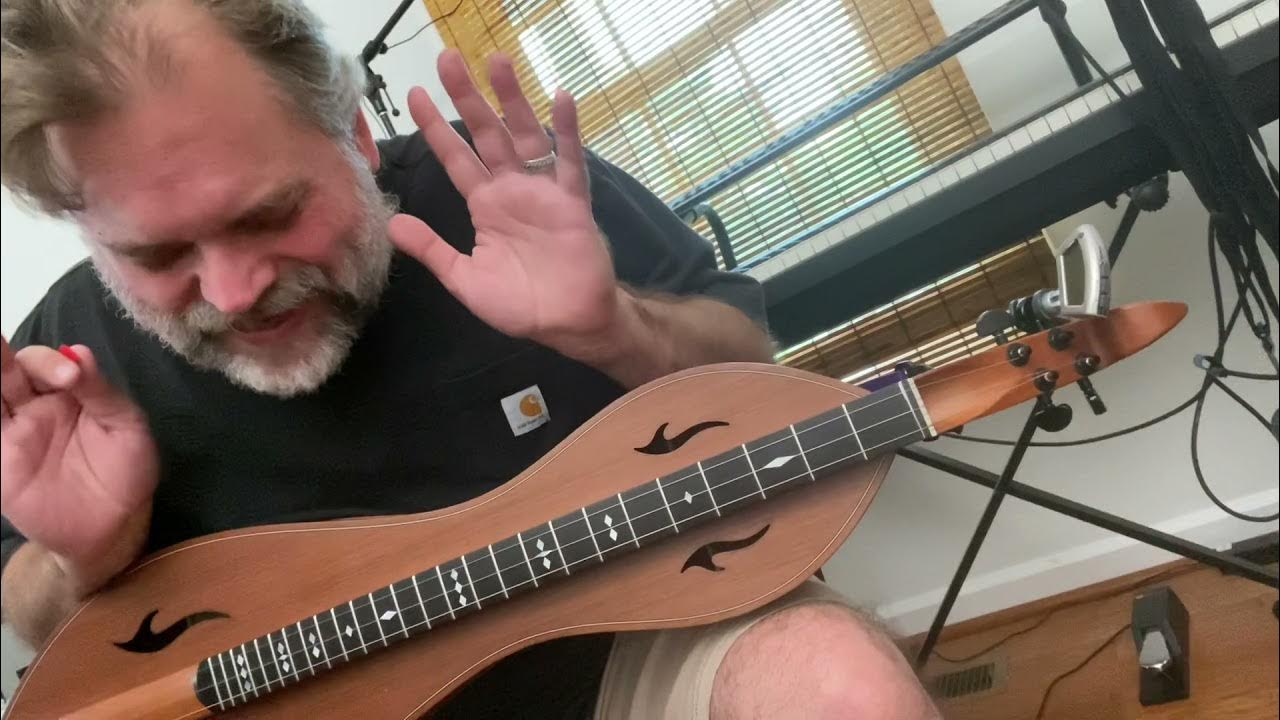Paleo
Student Of The Blues
I always wondered why scales are considered parallel to each other just because they start on the same tonic.
What's parallel about that?
Two points wouldn't be considered parallel.
You need lines.
This isn't the technically correct definition, but it works for me.
They have all 7 letter names in common in the same order, but different sharps or flats.
So for the modes of A Major I could first write out A thru G seven times in parallel and then go back through adding the sharps and flats.
Start with 7 "parallel lines":
A B C D E F G
A B C D E F G
A B C D E F G
A B C D E F G
A B C D E F G
A B C D E F G
A B C D E F G
Then 7 "parallel" scales:
A B C# D# E F# G#---A Lydian----------(E Major)
A B C# D E F# G#----A Ionian-----------(A Major)
A B C# D E F# G------A Mixolydian-----(D Major)
A B C D E F# G-------A Dorian----------(G Major)
A B C D E F G---------A Aeolian--------(C Major)
A Bb C D E F G--------A Phrygian-------(F Major)
A Bb C D Eb F G-------A Locrian--------(Bb Major)
At least I can justify, for myself, more than just 1 note "in parallel".
Now I can sleep at night.
What's parallel about that?
Two points wouldn't be considered parallel.
You need lines.
This isn't the technically correct definition, but it works for me.
They have all 7 letter names in common in the same order, but different sharps or flats.
So for the modes of A Major I could first write out A thru G seven times in parallel and then go back through adding the sharps and flats.
Start with 7 "parallel lines":
A B C D E F G
A B C D E F G
A B C D E F G
A B C D E F G
A B C D E F G
A B C D E F G
A B C D E F G
Then 7 "parallel" scales:
A B C# D# E F# G#---A Lydian----------(E Major)
A B C# D E F# G#----A Ionian-----------(A Major)
A B C# D E F# G------A Mixolydian-----(D Major)
A B C D E F# G-------A Dorian----------(G Major)
A B C D E F G---------A Aeolian--------(C Major)
A Bb C D E F G--------A Phrygian-------(F Major)
A Bb C D Eb F G-------A Locrian--------(Bb Major)
At least I can justify, for myself, more than just 1 note "in parallel".
Now I can sleep at night.
Last edited:



